Growing cabbage in your garden can be a gratifying experience, offering a bounty of benefits beyond just the harvest.
As a vegetable, cabbage is both versatile in the kitchen and attractive in the garden, with its large, leafy heads adding a lush green presence.
Whether you’re a fan of coleslaw or sauerkraut, or just love your cabbage steamed or stir-fried, growing your own means you’ll have fresh, organic cabbage right at your fingertips.
Benefits of Growing Cabbage
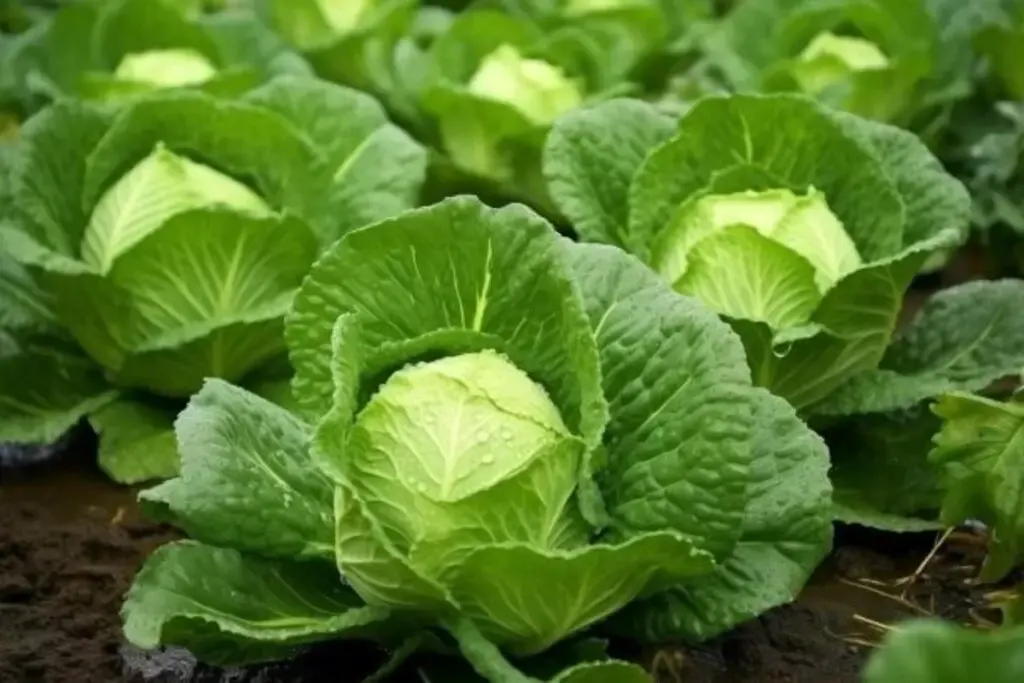
1. Nutritional Value
Cabbage is packed with nutrients. It’s high in vitamins C and K, contains antioxidants and dietary fiber, and is known for its health benefits, including aiding digestion and inflammation reduction.
2. Extended Harvest Season
Depending on the variety, cabbage can be harvested from late spring through late fall, providing a long harvest season. This allows you to plan for a continuous supply of fresh cabbage.
3. Pest Control
While cabbage does attract some pests, it can also be part of a pest management strategy in your garden.
Planting cabbage can help to distract pests from more sensitive plants, and certain cabbage varieties are more resistant to pests.
My Favorite Cabbage Varieties
1. Savoy Cabbage (e.g., ‘Savoy King’)
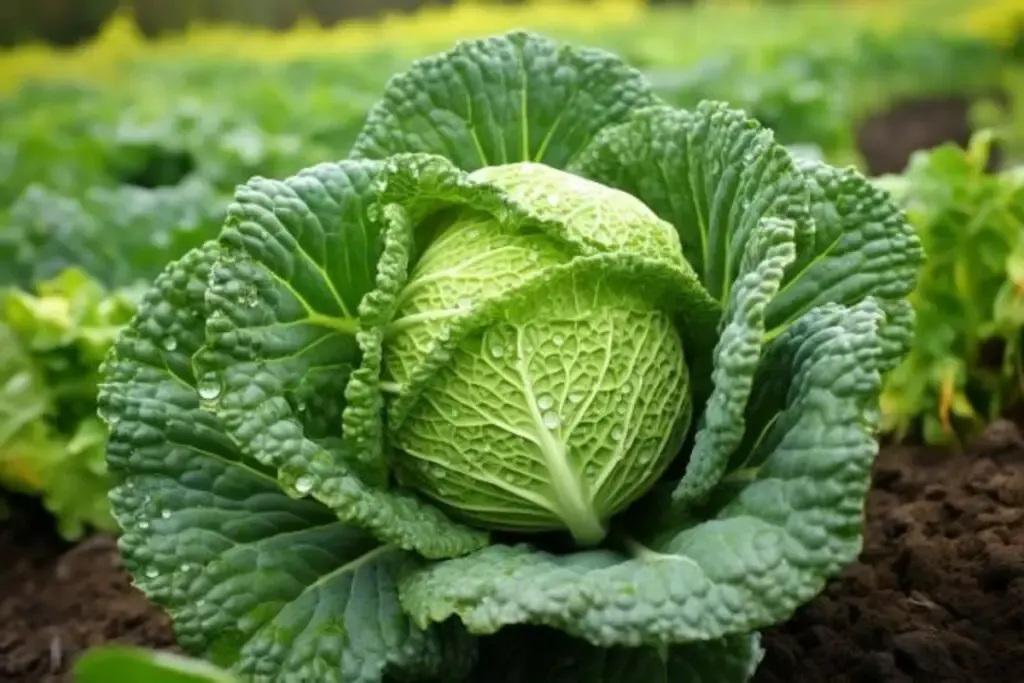
Recognizable by its crinkly, textured leaves, Savoy cabbage varieties like ‘Savoy King’ are known for their tender and sweet flavor. They are excellent for salads and coleslaws, adding a delightful crunch.
2. Green Cabbage (e.g., ‘Golden Acre’)
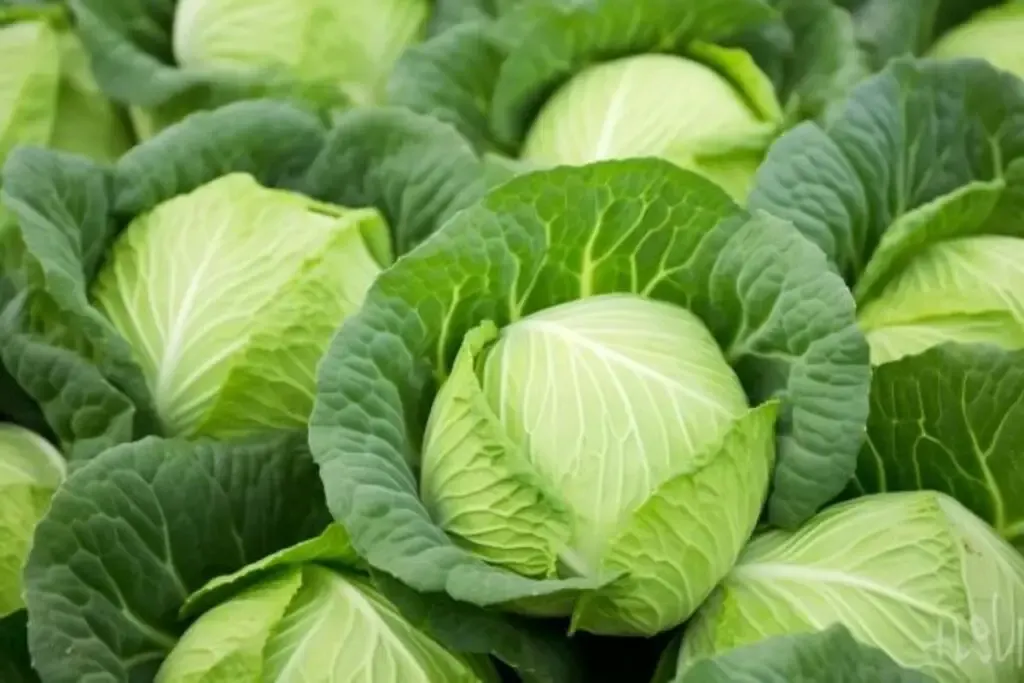
This is a classic cabbage variety, with ‘Golden Acre’ being a popular choice for its compact size and early maturity. Green cabbages are versatile in the kitchen, perfect for both raw and cooked dishes.
3. Red Cabbage (e.g., ‘Red Acre’)
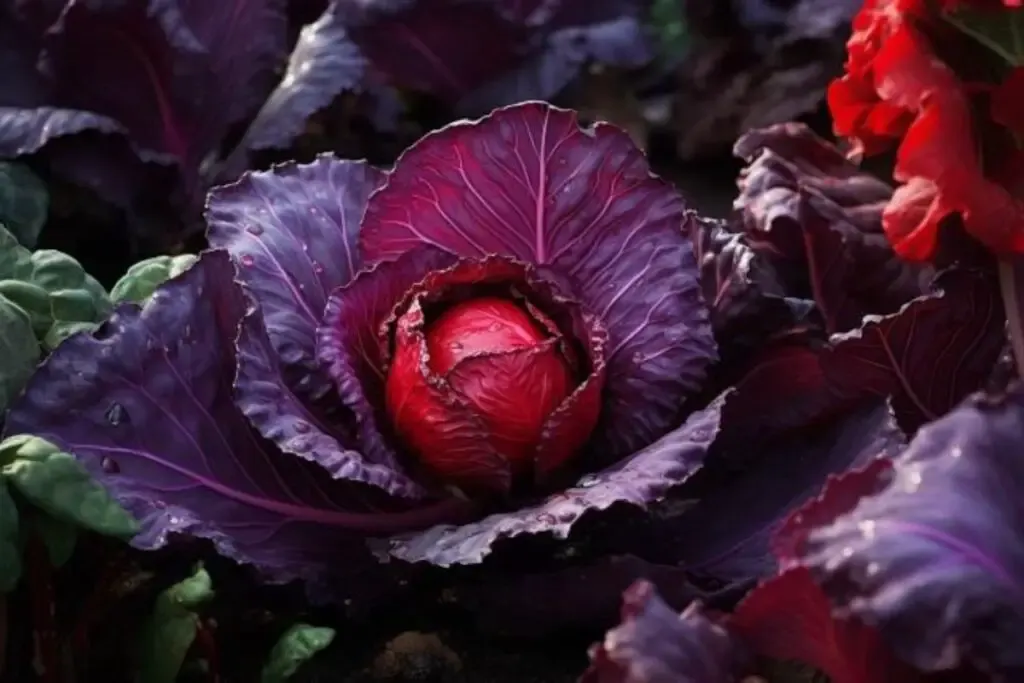
With its vibrant purple leaves, ‘Red Acre’ is not only visually striking but also rich in flavor. Red cabbages are great for pickling or adding color to salads and dishes.
Cabbage Care
Cabbage, with its lush foliage and hearty heads, can be a delightful addition to any garden. Providing the right care from planting to harvest is key to growing robust and tasty cabbages.
Here’s a guide to help you give your cabbage plants the best possible start and ongoing care.
Planting
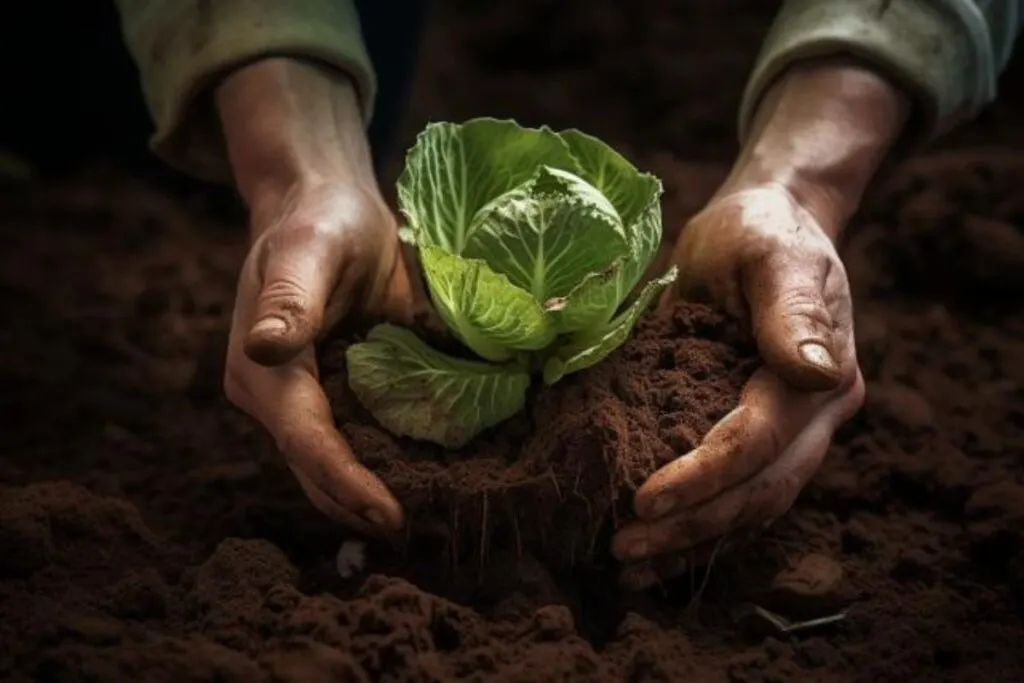
Cabbage can be grown from seeds started indoors or sown directly into the garden. For an early start, sow seeds indoors about 6 to 8 weeks before the last frost date.
Transplant the seedlings outdoors when they have 3 to 4 true leaves, spacing them about 12 to 24 inches apart, depending on the variety. Direct sowing can be done in late summer for a fall harvest.
Light
Cabbages need full sun to develop fully. They should receive at least 6 hours of direct sunlight each day. Adequate sunlight is essential for the formation of tight, well-formed heads.
Soil
Cabbages prefer well-draining, fertile soil rich in organic matter. The ideal soil pH for cabbage is between 6.0 and 7.0. Before planting, enrich the soil with compost or aged manure to improve its fertility and structure.
Water
Consistent and even watering is critical for cabbage. The soil should be kept evenly moist, but not waterlogged.
Cabbages require about 1 to 1.5 inches of water per week, either from rainfall or irrigation. Mulching around the plants can help retain soil moisture and control weed growth.
Temperature and Humidity
Cabbage is a cool-season crop and grows best in temperatures between 60°F and 70°F. They can tolerate frost and slightly lower temperatures, but hot weather can cause them to bolt or form loose heads.
Cabbages generally do well in a range of humidity levels as long as they are watered appropriately.
Fertilizer
Use a balanced fertilizer when planting and again when the plants are about half-grown. Cabbages are heavy feeders and benefit from additional nutrients.
However, avoid over-fertilizing, especially with high nitrogen levels, as this can lead to leafy growth at the expense of head formation.
Harvesting Cabbage
Harvesting cabbage at the right time is crucial to enjoy its best flavor and texture. The heads should be firm all the way through when squeezed.
Typically, cabbages are ready for harvest about 70 to 80 days after planting, depending on the variety. To harvest, cut the head from the base of the plant using a sharp knife.
Some varieties may produce additional small heads (called “ratoons”) after the main head is harvested – these can also be harvested later.
Pruning
Pruning is not typically required for cabbage. However, removing any yellowing or damaged outer leaves can help improve air circulation and overall plant health.
This practice can also help in inspecting for pests or diseases that might be hiding under the leaves.
Propagating
Cabbages are usually grown from seeds and are not propagated from cuttings like some other vegetables.
To propagate cabbage, you would save seeds from a mature plant. Let a healthy plant go to seed, then collect and store these seeds in a cool, dry place for planting in the next season.
How to Grow Cabbage From Seed
Growing cabbage from seed is a straightforward process. Start the seeds indoors about 6-8 weeks before the last frost date.
Sow the seeds about 1/4 inch deep in a seed-starting mix. Keep the soil moist and provide adequate warmth and light.
Once the seedlings have a few true leaves and are strong enough, harden them off by gradually exposing them to outdoor conditions before transplanting them into your garden.
Growing in Pots
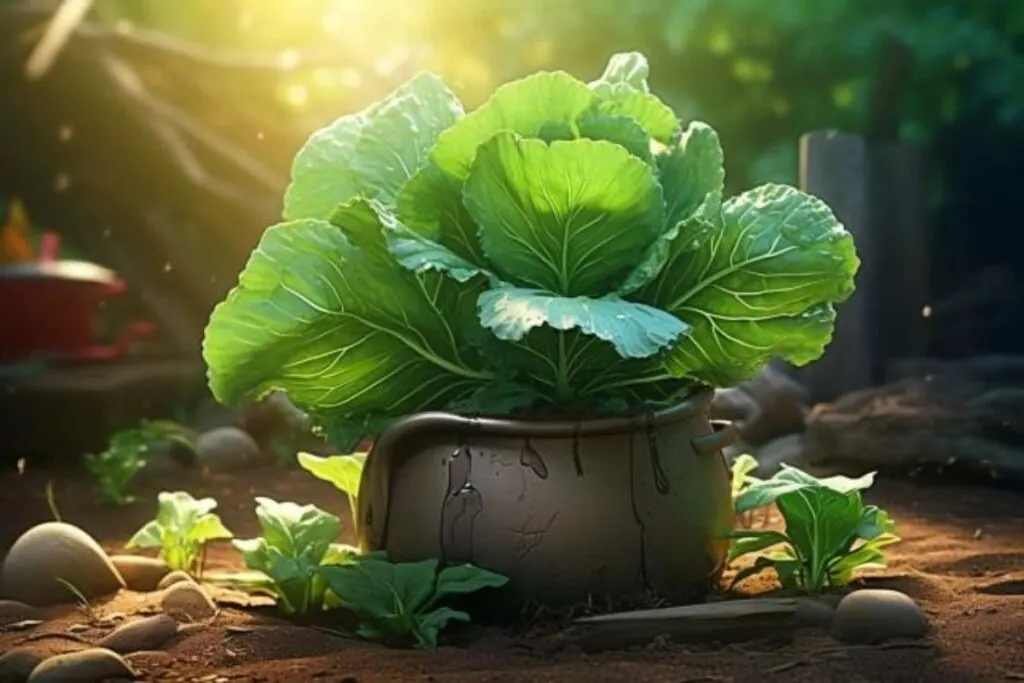
Cabbage can also be grown in pots, which is great for those with limited space.
Choose a container that is at least 12 inches deep and wide enough to accommodate the plant’s growth, typically about 18 inches in diameter.
Use a high-quality potting mix and ensure adequate drainage. Keep in mind that container-grown cabbages may require more frequent watering to maintain consistent soil moisture.
Overwintering
Overwintering cabbage can be a successful endeavor, especially with varieties that are hardy and well-suited to cooler temperatures.
In milder climates, cabbages can often survive the winter outdoors with some protection. Apply a thick layer of mulch around the base of the plants to insulate the roots and protect them from freezing temperatures.
In regions with harsh winters, it’s generally best to harvest your cabbages before the deep freeze sets in, as most varieties are not frost-hardy enough to survive extreme cold.
Transplanting
Transplanting cabbage should be done with care to ensure the best growth. The ideal time to transplant seedlings is when they have 3 to 4 true leaves, typically 6 to 8 weeks after sowing.
Harden off the seedlings by gradually exposing them to outdoor conditions over a week. When transplanting, handle the seedlings gently and plant them at the same depth they were growing in the containers.
Water them well after transplanting to help establish the roots in their new environment.
Common Pests & Diseases
Cabbage is susceptible to a variety of pests and diseases. Common pests include cabbage loopers, aphids, and cabbage worms, which can be controlled through organic methods or pesticides.
Diseases like clubroot, black rot, and downy mildew can also affect cabbage plants. To prevent these, practice crop rotation, ensure proper spacing for air circulation, and use disease-resistant varieties.
If pests or diseases are observed, treat them promptly to prevent spread. Growing cabbage in your garden can be a wonderfully satisfying experience. From planting to harvest, each step in the journey offers its own rewards.
Whether you’re a seasoned gardener or just starting out, the joy of cultivating your own cabbages brings not just delicious produce to your table, but also the satisfaction of knowing you grew them yourself.
Enjoy the process and the bounty of your harvest!

